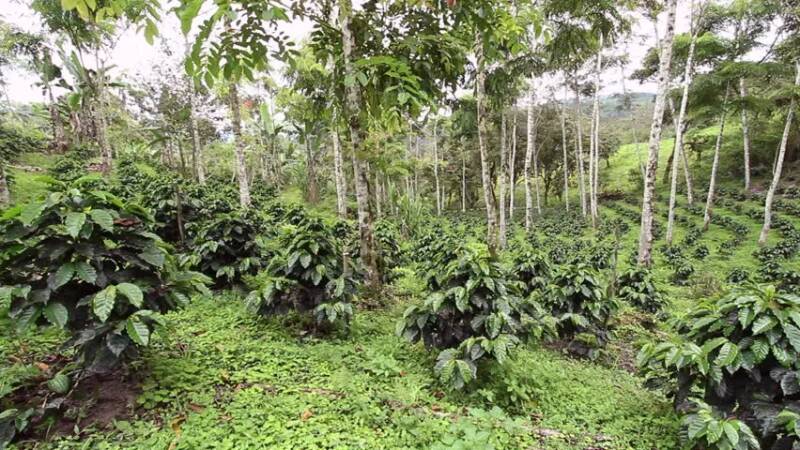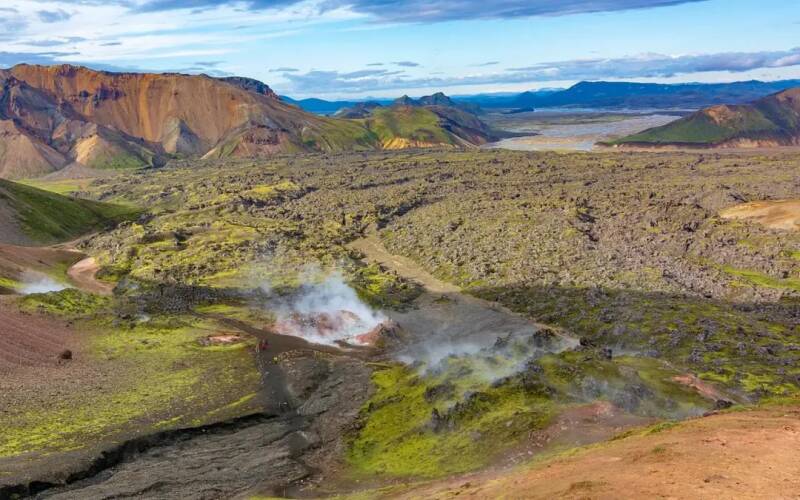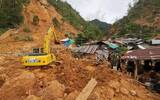Introduction to Windmill Estate in Loja Province, Ecuador's coffee producing area
South America is the fourth largest continent in land area, with a variety of environmental resources, the Andes almost runs through the western part of South America, and the continent is a continent with more volcanoes in the world. The continent has a warm and humid climate, mainly tropical, and abundant rainfall, which is very suitable for agricultural cultivation such as coffee. There are many coffee producing countries in the continent, such as Brazil, Colombia and Ecuador.
Coffee was introduced to Ecuador in the early 19th century and the first coffee plantations were established in the coastal areas of Manabi province in the 1860s. However, the cocoa industry has always been the main industry in Ecuador, and coffee cultivation has not received much attention. Coffee did not become a major business in Ecuador until the late 1920s, when the cocoa industry was threatened by disease.

But the good times did not last long, when the price crisis in the 1990s led to a sharp decline in coffee production in the country. By the early 2000s, Ecuador's economy was mainly dependent on oil, while agriculture was less than in many other coffee-growing countries. However, in recent years, thanks to the efforts of local farmers and bakers, the Ecuadorian coffee industry has begun to recover.
Although Ecuador currently accounts for a low proportion of coffee production in the world, its coffee varieties are recognized because of their unique growth conditions. Ecuador is crossed by the equator in the north of the border, and the Andes runs through the north and south. There are many volcanoes and earthquakes in the territory. The territory is divided into four parts: the western coast, the central mountains and the eastern Amazon River Galapagos Islands.

The climate of the four regions is different and the climatic conditions are diverse. The western coastal area has a tropical rain forest climate, with an average temperature of 23-25 ℃. The basin in the central Andes belongs to the savanna climate, and the mountain belongs to the subtropical forest climate, with perennial snow above 4000 meters above sea level, rainy season from December to June of the following year, and dry season from July to November. The eastern Amazon has a tropical rain forest climate, which is humid and rainy all the year round, with an average annual rainfall of between 2000 and 3000 mm. The diverse climate, abundant rainfall, volcanic soil and rivers make the country an ideal place for coffee cultivation.
Ecuador still produces Arabica and Robusta coffee varieties at the same time, while Arabica producing areas are mostly concentrated in the plateau volcanic areas of the central Andes, roughly divided into north and south high areas, and the harvest period is from March to October every year. The northern region is mainly Carchi in Karch province, Imbabura in Inbabula and Pichincha in Piccha province, while in the south it is mainly Loja in Loha province, Azuay in Asua province and Zamora Chinchipe in Samora Chinchipe province.
Loja, Loha Province, located in southern Ecuador, close to the Andes, is one of the highest coffee growing areas in the world, growing at 1450-2000 meters above sea level. The region is filled with thick fog from the Pacific Ocean at noon, so that the area can maintain sufficient humidity. The local high altitude, unique microclimate, fertile and high-quality soil are very suitable for coffee growth, with superior coffee growing conditions. At present, Loha Province is an important coffee export city in the country. And there are many well-known manors in the producing area, such as Rich Manor El Dorado, windmill Manor La Noria and so on.
Windmill Manor La Noria belongs to rural areas such as CVM Coffee, an Ecuadorian agricultural company founded by Bernard Uhe and its Colombian coffee growers with many years of coffee growing experience.
The estate established by the company in cooperation with the locals was initially established as a breeding base for CVM, and then gradually developed the business of harvesting and processing coffee. In 2022, Noria Manor won second place in Ecuador COE for a rose summer with 89.35 points, and COE,Noria Manor in Ecuador won the championship with a rose summer score of 91.22 in 2023.
This success is due to the fact that Noria Manor is planted at an altitude of about 2000-2300 meters above sea level, with high altitude, fertile soil, mineral-rich landscapes, shady trees and plenty of sunshine to produce quality coffee. At present, there are mainly varieties such as Rosa Geisha, Typica, SL28 and so on.
Important Notice :
前街咖啡 FrontStreet Coffee has moved to new addredd:
FrontStreet Coffee Address: 315,Donghua East Road,GuangZhou
Tel:020 38364473
- Prev

Takeout has been stolen many times, and the tea shop has specially made a "condemnation poster"!
▲ Click to pay attention| Daily Boutique Coffee Culture Magazine Coffee Workshop Recently, Zhejiang Economic Television received a report from netizens that a poster with some special content had been posted in front of a local tea and beverage shop. Judging from the pictures provided by netizens, this eye-catching poster more than one meter wide does not promote their own products, but condemns the theft of takeout food.
- Next

Sudden! Heavy rainfall and landslides in Indonesia kill dozens of people, affecting the coffee industry
According to local media reports in Indonesia, Indonesia has been affected by severe weather in recent times, with heavy rainfall and landslides, causing many casualties and affecting many industries in the country. According to the Indonesian National Disaster Prevention Agency, on July 14 local time, due to heavy rainfall, in India
Related
- What effect does Italian American coffee with filter paper have? Will coffee taste better if it is put on filter paper at the bottom of the powder bowl?
- What is the color difference in coffee beans? What are the characteristics of honey processed coffee beans? Why are the anaerobically treated coffee beans uneven in color?
- How does novice Xiaobai quickly get started and make coffee? Newbies learn to make coffee by hand and share the specific steps and process process!
- Costa tea has a shelf life of 100 years?! Expert: Unable to verify
- It's a huge uproar! American milk addition was rejected by Manner employees?!
- Mocha pot coffee bean recommendations| How fine and how much powder should be used for grinding? What parameter ratios do I need to use to make milk with Mocha pot coffee?
- What are the characteristics of the world's top ten coffee beans treated with Costa Rica honey? How to make black honey kadura from Tarazhu Pilon Processing Plant taste good?
- How to make deep-roasted coffee? What grinding water temperature does authentic Jamaica Blue Mountain No. 1 coffee use to brew it well?
- Selected high-grade rose summer coffee flavor tasting guide Why Panama rose summer has the aroma of flowers and fruits
- What equipment does a novice Xiaobai need to buy to learn to make coffee? Filter cup electronic scale bean grinder manual flushing pot purchase guide

